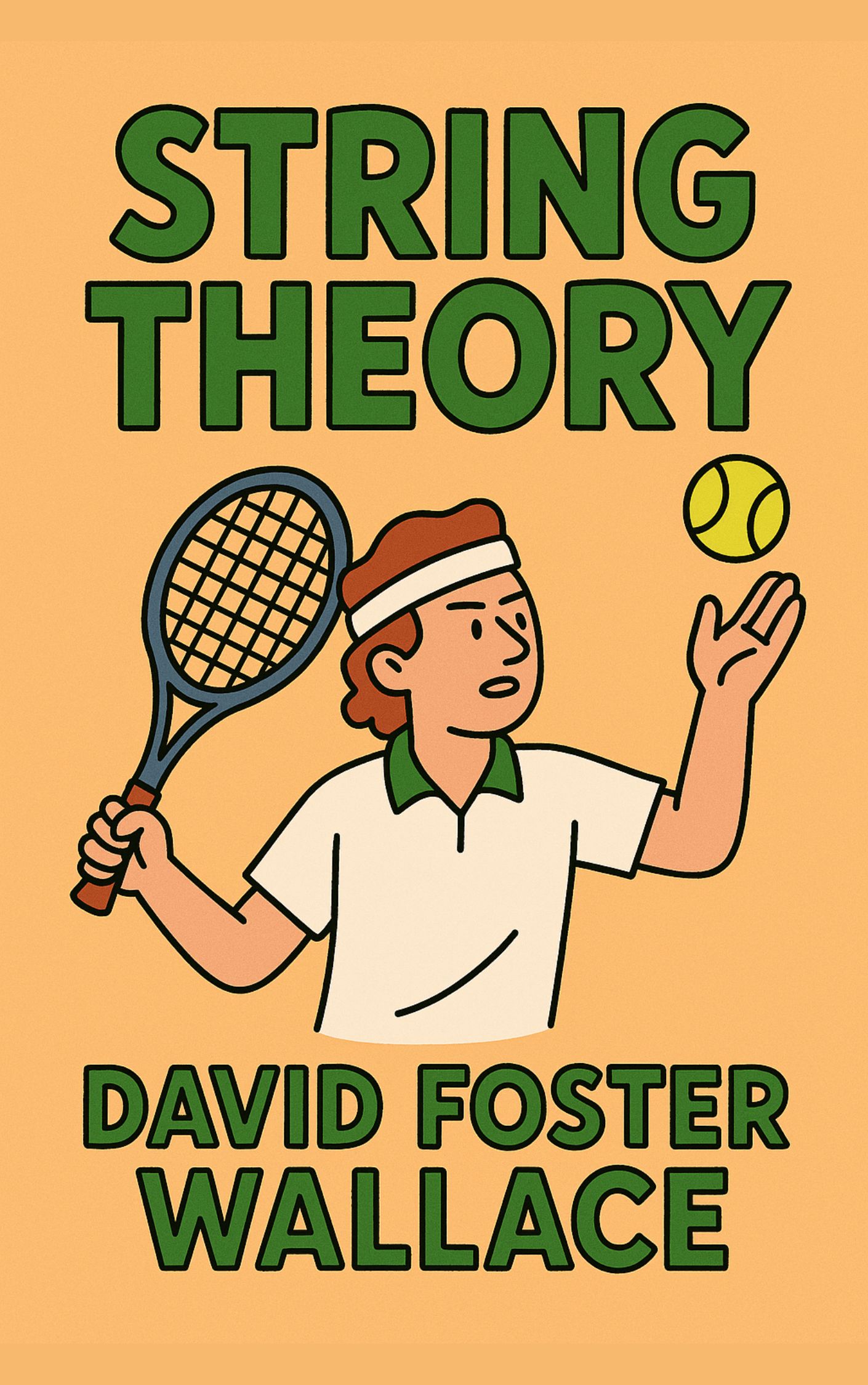Description
Tennis is often thought of as just a game of rackets and balls, but in truth, it is a world of endless struggle, discipline, and rare moments of beauty. In String Theory, David Foster Wallace gives us a look at this world, not only as a writer but also as someone who once played the game himself. His voice mixes memory, observation, and admiration for those who rise to the top.
Wallace was not only a famous author; he also spent part of his youth as a competitive junior tennis player. He was never the fastest or the most polished, but he learned how to turn disadvantages into strengths. Growing up in windy Illinois, he discovered how to use the weather as a secret weapon. While stronger opponents tried to overpower him with speed and precision, Wallace used the wind to confuse them. He lobbed the ball high and steady, letting nature take its course. His opponents, polished and prepared, often failed under these conditions. What seemed like weakness—his lack of speed—became strength because he adapted.
Another unlikely advantage was his excessive sweating. In the brutal heat of Midwestern summers, many players gave up after hours in the sun. But Wallace, drenched in sweat and fueled by snacks and water, could keep going long after others had wilted. He joked that he was like a “medicine boy of wind and heat,” someone who could endure when others could not. These small tricks and natural quirks kept him in the game, even if he never became a star.
But Wallace makes it clear: being decent in your local courts is nothing like breaking into the professional world. Professional tennis is brutal. At the very top are the players ranked within the first hundred in the world. These players gain automatic entry into the great tournaments—the Grand Slams that the world watches. But those outside the top hundred must battle through qualifying rounds just to get a chance. These rounds are not glamorous; they are filled with exhausted veterans, desperate dreamers, and young players who may never quite make it.
The gap between the best and the nearly-best is enormous. The 75th player in the world can crush someone ranked 180th without breaking a sweat. Even reaching the top 500 is a lifetime achievement, but few spectators understand how much suffering goes into climbing even that far. Childhoods are given up, diets are strict, and pleasures are denied. For the players, life is training, travel, and endless repetition. To us it looks glamorous; to them it is often exhausting and lonely.
If you’ve ever believed that, with enough effort, you could have been a pro, Wallace has bad news: you’re mistaken. On TV, tennis seems slower and easier than it really is. In person, you realize just how fast and demanding it is. Professionals glide across the court with a speed that almost seems unreal. They control the ball with precision—spin, pace, and angle all at once—while running at full speed. A single match can feel like playing several basketball games back-to-back in terms of energy spent.
It is not just about speed and stamina, though. It is also about vision. Professional players see the court differently. They track the ball with exact precision and, at the same time, always know where their opponent is moving. It is as if they hold two maps in their head at once: one of the ball, and one of the other player. This double vision separates good players from great ones.
Yet Wallace also explains something surprising: great athletes are often boring when it comes to their own stories. Sports memoirs are often flat and lifeless. They are filled with clichés like “taking one point at a time.” At first glance, these phrases seem empty, but Wallace suggests there is truth in them. The very thing that makes an athlete great is the ability to clear the mind. When millions watch in silence as a player serves during a tense moment, there is no room for doubt or inner drama. Simplicity, repetition, and focus are what keep them strong. What seems boring to us is, in fact, their secret weapon.
This is why many memoirs disappoint. They cannot reveal deep mysteries because the truth is often plain: work hard, focus, keep calm. Athletes survive by shutting out everything else. Their greatness lies not in magical words but in silence.
And then there is Roger Federer. For Wallace, Federer represents something almost holy in the game. Before Federer, tennis seemed stuck. With new racket technology, players relied on endless baseline rallies, trading powerful shots back and forth. The old style of serve-and-volley had faded. Matches could feel repetitive and heavy. But Federer changed the game.
He brought grace back to the court. Instead of just blasting shots, he used space, movement, and intelligence. He forced opponents to run, stretched them to the edges of the court, then struck with precision. He seemed to find angles and shots that no one else could imagine. Even in slow-motion replay, viewers still ask, “How did he do that?” Federer turned tennis into art. His movements are not only technical; they are poetic, as if he bends time itself.
When Federer is at his best, the experience for him is completely different from ours. To him, the ball may feel larger, slower, easier to control. To us, watching from the stands or through a screen, it appears as a flash of genius. For him, it is a long, almost timeless moment of clarity. Wallace compares this to watching Michael Jordan hang in the air—something beyond ordinary human rules.
In the end, String Theory is not just about tennis. It is about what happens when human effort, focus, and talent combine in rare moments of perfection. It is about how ordinary people dedicate their lives to something most of us will never truly understand. And it is about the beauty that rises out of sweat, sacrifice, and relentless practice.
For spectators, tennis is a show. For players, it is a life of hardship and strict discipline. But when someone like Federer moves across the court, all of that fades. What we see is grace, the kind of beauty that cannot be explained fully by science or skill. It feels miraculous, even if it is built on years of invisible labor.
The message is clear: tennis is more than sport. It is discipline, endurance, pain, and beauty combined. For those who watch, it offers brief glimpses of something pure and extraordinary. For those who play, it is a test of body and spirit.
If you ever have the chance, Wallace suggests, go see a match in person—not just the finals, but the smaller games where you can stand close to the court. Only then will you truly feel the gulf between ordinary skill and professional brilliance. Watching tennis live makes you realize how much of the game is hidden by cameras and commentary. Only in that moment do you see just how superhuman these athletes are.





